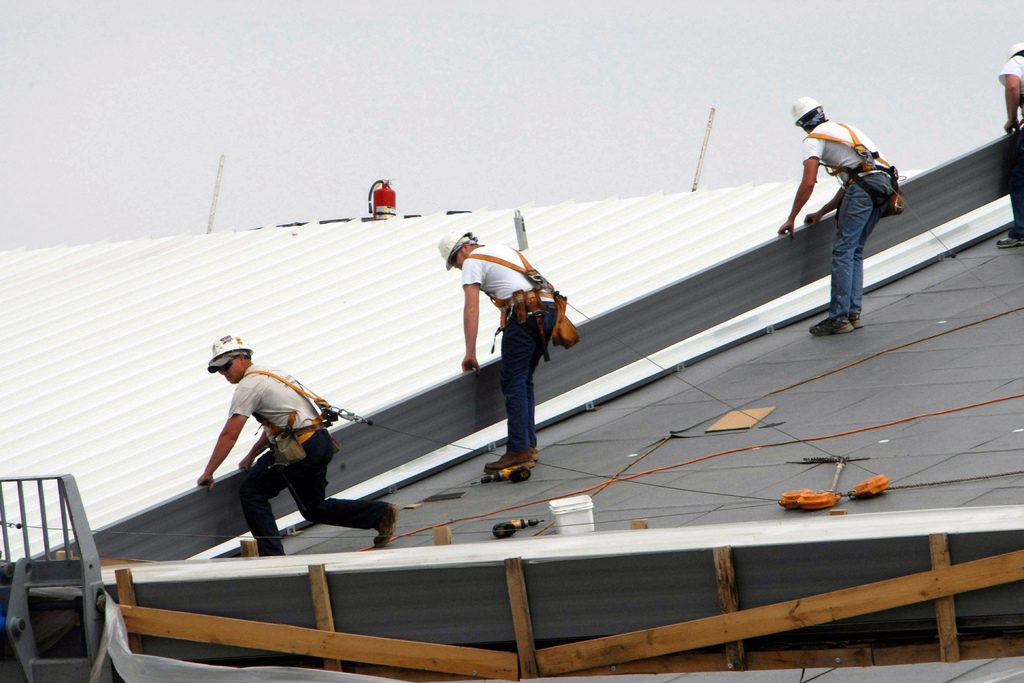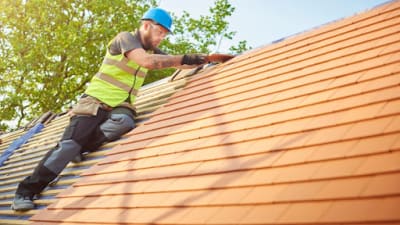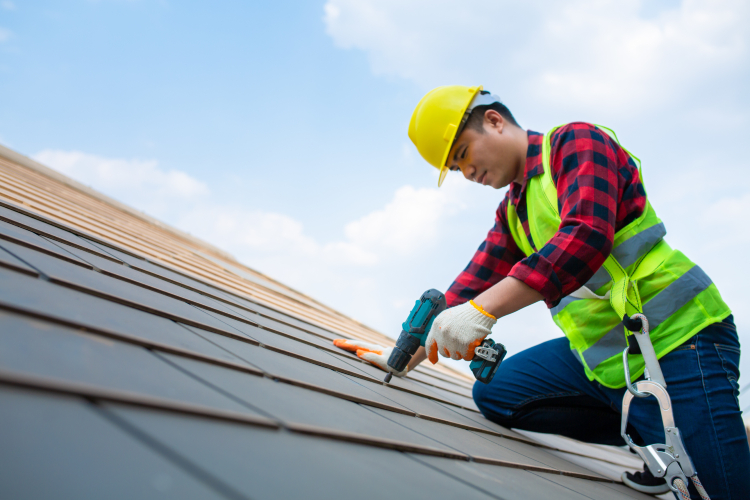Get durable materials and craftsmanship from a skilled Toledo Roofer.
Get durable materials and craftsmanship from a skilled Toledo Roofer.
Blog Article
How to Evaluate Different Roof Choices for Your Building Demands
Assessing roof covering choices for your building calls for a comprehensive method that thinks about different elements such as the planned use of the framework, neighborhood climate problems, and product characteristics. It is vital to consider the benefits and drawbacks of various roofing types, from asphalt shingles to steel and clay ceramic tiles, while additionally considering first expenses and long-term upkeep. Furthermore, comprehending energy efficiency and visual allure can affect your decision. As you contemplate these factors to consider, one question remains: which variables will ultimately lead your choice for a lasting and aesthetically pleasing roof solution?
Evaluating Your Building's Requirements
To effectively evaluate roof covering alternatives, start by thoroughly evaluating your building's demands. Start by considering the structure's meant usage, as various frameworks might require differing roof specifications. Property roof coverings commonly focus on looks and insulation, while business structures may focus on sturdiness and load-bearing capability.
Following, evaluate the regional climate problems that will affect roof covering efficiency. Elements such as temperature fluctuations, precipitation levels, and wind patterns can affect material selection and design. A roof that masters a warm climate might not do as well in areas prone to heavy snowfall or extreme warmth.
Additionally, evaluate the architectural honesty of your structure. Guarantee that the existing framework can sustain the picked roofing materials, specifically if taking into consideration much heavier choices. It is additionally vital to assess any kind of neighborhood building codes or guidelines that may determine certain demands for roof systems.

Comparing Roof Products
As soon as a thorough assessment of your structure's requirements has been completed, the next action includes comparing numerous roof materials. Each material supplies unique advantages and negative aspects, making it necessary to align your selection with your details requirements and conditions.
Asphalt tiles are commonly recognized for their affordability and ease of installment, making them a prominent choice for household buildings. On the other hand, steel roofing, understood for its durability and durability, can withstand extreme weather condition conditions yet might include a greater preliminary investment.
Clay and concrete tiles offer outstanding thermal insulation and visual allure, particularly for Mediterranean-style style, yet they call for an even more robust structural support due to their weight. Timber trembles offer a natural appearance and excellent insulation residential properties yet might demand more upkeep and are prone to fire risks.
Evaluating Expense and Budget
Analyzing your roofing choices demands a careful assessment of price and spending plan factors to consider. The general allocate a roof task consists of a number of factors, consisting of product prices, labor expenditures, maintenance, and possible long-lasting financial savings. It is vital to establish a clear spending plan before discovering specific roofing Learn More products, as this will assist the decision-making process and help you stay clear of overspending.
Begin by obtaining quotes from numerous professionals to understand labor costs in your area. Ensure that these estimates include all essential services, such as elimination of the old roofing system, installation, and any additional attributes, like insulation or ventilation improvements - Roofing Contractor. Next off, examine the cost of various roof covering materials, considering both initial installment costs and anticipated life-span

Understanding Energy Efficiency
Power effectiveness plays a critical duty in the option of roof products and systems, substantially impacting both power usage and general convenience within a structure. An appropriate roof covering can improve thermal performance, lowering the demand for home heating and next cooling systems, which consequently decreases energy expenses and decreases ecological influence.
When examining roofing alternatives, think about products that mirror rather than absorb heat. Additionally, appropriate insulation and air flow are necessary to maximize the power efficiency of the whole roof system.
An additional crucial aspect is the roof system's durability and upkeep needs. Durable products that call for less regular replacement add to lasting power financial savings. The power efficiency of a roofing system can likewise be analyzed through its compliance with well established sustainability rankings such as Power STAR Related Site or LEED.
Considering Visual Charm
A roof covering's visual allure dramatically influences the overall appearance of a building, matching its architectural design and enhancing aesthetic charm. Roofer. When reviewing roofing options, it is crucial to take into consideration exactly how the selected product, shade, and layout will harmonize with the existing structure and area. A properly designed roof can elevate also the easiest of buildings, transforming them into aesthetic focal factors
Various roof covering materials supply various visual qualities. Traditional roof shingles may stimulate a traditional charm, while metal roof can give a modern-day, smooth look. Furthermore, the shade of the roofing material plays an essential role; lighter shades can make a building show up even more roomy, while darker tones may develop a cozier atmosphere.
Moreover, building aspects, such as dormers and eaves, can improve the roofing system's aesthetic impact. It is recommended to speak with expert designers or architects to ensure the selected roof covering option lines up with the overall layout intent. Ultimately, a roof should not only offer useful advantages but also contribute favorably to the building's aesthetic, reflecting the proprietor's taste and the personality of the surrounding environment.
Final thought

Report this page